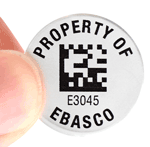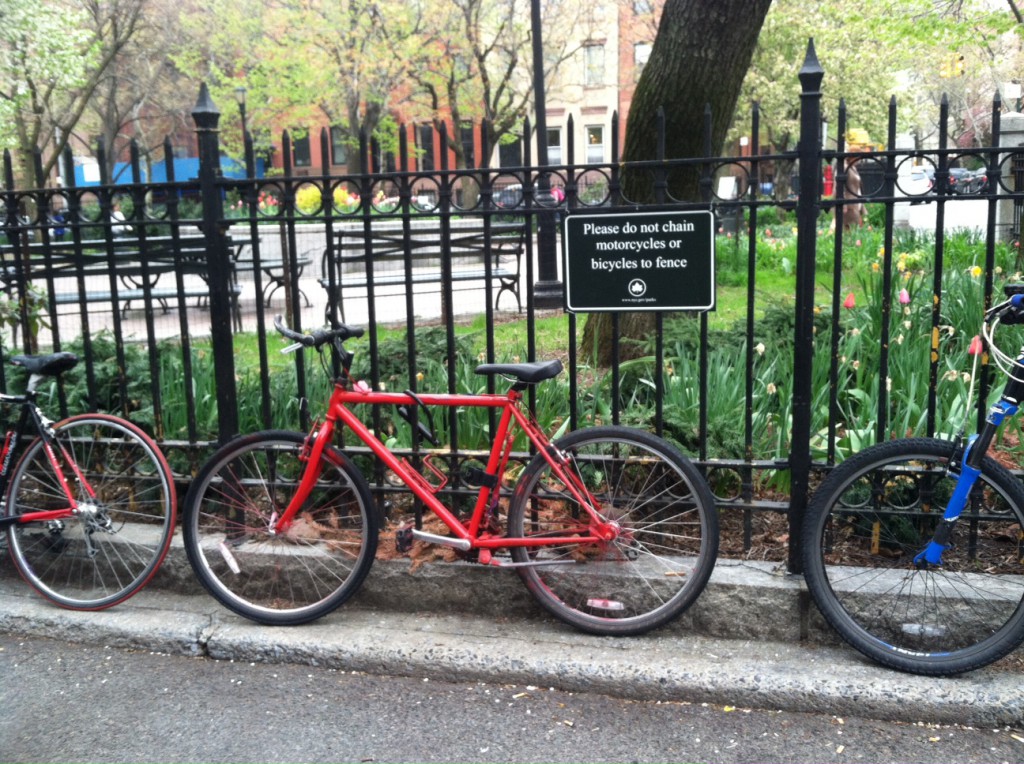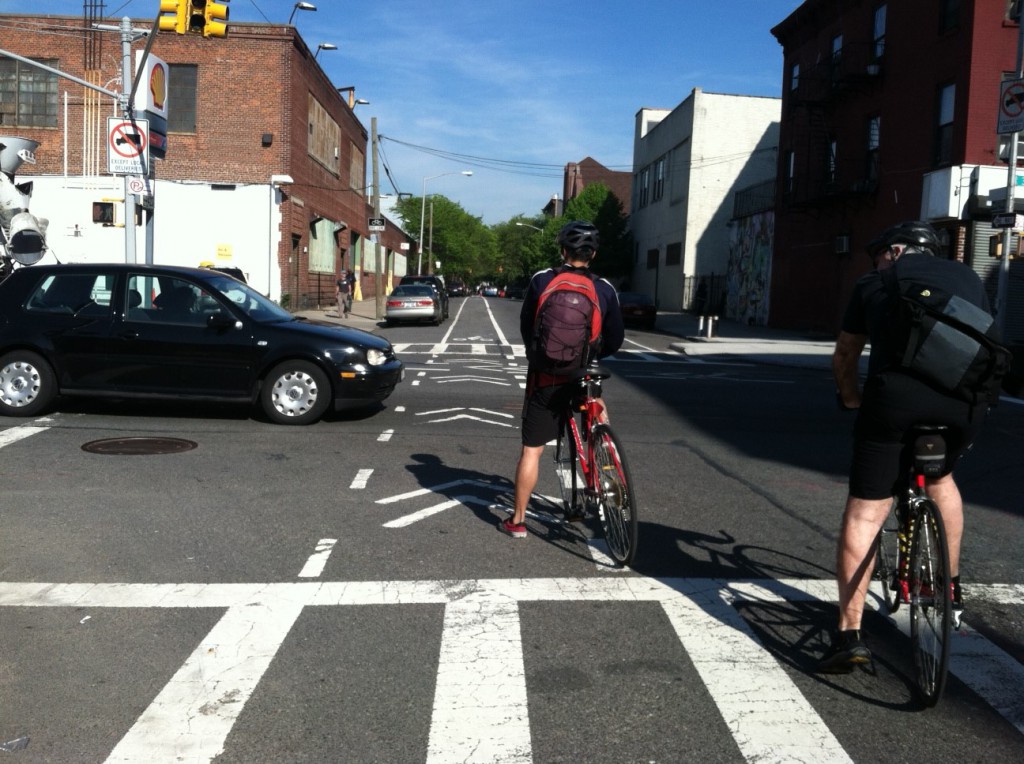Bike commuting safety and etiquette: pedestrians are people too
Happy bike to work month! We hope you’re getting that bike out of the shed and joining us on the road. Since we all get by with a little help from our friends, we’re sharing a special series of posts on bike commuting safety, curated by BikeGuard’s own Charity Stebbins and featuring insights from your favorite bike bloggers. This week, you’ll hear from Nern Ostendorf, Executive Director of the Cincinnati bike advocacy organization Queen City Bike.
Cyclists: not quite cars, not quite pedestrians. Given these ambiguous identities, cyclists often operate under their own vigilante traffic code. A red light means caution rather than stop, the line in front of an intersection is ignored, and one way roads are more of a suggestion than an edict. It can make sense for cyclists to behave a little differently from cars for safety’s sake; there’s a reason, for example, that bike motion sensors in Pleasanton, California give cyclists extra time to travel through traffic lights. Still, bikers (and I am one, so I get to say so) can take too many liberties. The result is dangerous, and, well, rude.
Look out for pedestrians, not just cars, as you pass through intersections.
A couple months ago I saw a cyclist breeze through a red light. She took a moment to look for oncoming vehicles, but didn’t check for pedestrians. As a result, the cyclist nearly ran over a woman who was carrying a baby across the intersection. The pedestrian, understandably outraged, was forced to stumble backwards, and the cyclist didn’t stop. That kind of bike commuting behavior should embarrass all bikers.
Nern Ostendorf sums it up this way:
I don’t know exactly where we get this bully mentality when we travel, but the worst bicycle behavior I often see is where a bicyclist has the upper hand: on the bike path. Just as how some car drivers assert their frustration on bicyclists riding the roads, bike riders can have the very same behavior with pedestrians on bike paths: I’m bigger, I’m faster, so you’d better get out of my way. I have seen riders cutting too close and making poor decisions in the attempt to avoid slowing down at all to pass. This behavior endangers both the bicyclist and the pedestrian. Because the trail is perceived to be safer than riding on the street, riders can become reckless and aggressive.
Bike paths, as Nern relates, are important places to be mindful of pedestrians. Other sensitive areas are pedestrian crosswalks.
Always make room for pedestrians while waiting at an intersection.
A common sight in New York City: Bikers roll up as far as possible into an intersection, in order to get a head start when the light turns green (or, more often, when there’s an opportunity to slip through the red). Where is a pedestrian going to walk? Expecting someone to weave between you and other cyclists when you may burst forward at any moment is discourteous and dangerous.
Approach an intersection slowly so that pedestrians know you’re planning to stop.
It’s important that everyone feel comfortable and safe on their commute, no matter how they’re getting around. Apply the golden rule: how would you want a car to treat you? Pedestrians are more vulnerable than cyclists (and can even be killed by them) – they need some space from bikers. Don’t scare them to death: slow down well before you reach a red light to indicate to pedestrians that you’re in control and they’re able to cross safely.
And now, more great advice from Nern. We asked her to share her insight: what safety tips do beginner city bike commuters need to know? Enjoy, share, and comment!
Be predicable, be visible, be comfortable, and be assertive.
1) Be Predictable: This means that you don’t weave in and out of traffic lanes, making other users have to guess where you will be. Only ride in turn lanes if you intend to turn. Use your hand signals when turning. And, running red lights is not exactly predictable behavior, is it?
2) Be Visible (but assume you are invisible): This means wearing bright or reflective clothing in the daytime, and having your front and rear lights flashing when riding at night or in the rain. This is also why it is dangerous to ride on sidewalks–because cars won’t be as likely to see you as they turn in and out of driveways.
3) Be Comfortable: Wear something that you are comfortable riding in. If your wrists, knees, elbows, or anything else really aches or bothers you, your bike might be too large, too small, or improperly fit. Find a route to your destination that doesn’t exhaust you or stress you out. Look for quiet side streets that get you to your destination. If there is no way to get where you need to go without feeling like you are going to get run over by a semi, then consider organizing in your community and to your local government about improving safety along the route. Consider local transit options to improve and expand your ability to travel by bicycle. Bicycling should be a pleasurable experience!
4) Be Assertive: This is distinctly different from being aggressive or fearless, but also dangerous is the tendency to be too timid on the streets. Make eye contact with drivers when changing lanes and when turning if you can. Ride in the center of your lane. This is important for two reasons, it makes passing cars change lanes to pass you – giving adequate space for you, and it keeps you out of the door-zone, that part of the road that the left-side car-doors open up into (too often hitting a bicyclist). If you communicate with car drivers that you belong in the roadway, they are much more likely to respect you as a fellow vehicle on the road.
Category: BikeGuard














